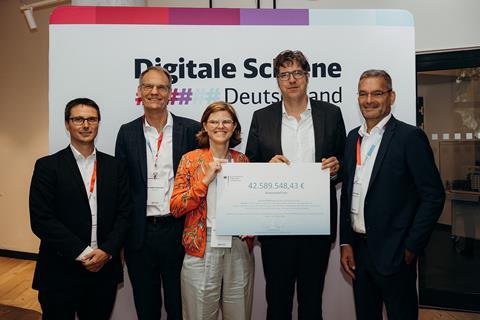
GERMANY: Fully automated operation of regional passenger trains has moved a step closer with the launch this month of the AutomatedTrain project by Deutsche Bahn and partners from industry and research.
Forming part of the Digital Schiene Deutschland (Digital Rail Germany) initiative, the project aims to develop fully automated positioning and stabling of trains over the next three years. Detailed results will be made available during the InnoTrans trade fair in 2026.
Two trainsets will be used for prototype development and testing. One will be a Mireo trainset provided by Siemens Mobility which will be equipped for GoA4 unattended operation; the other set will be drawn from the Stuttgart S-Bahn fleet.
The Mireo set will be used specifically to test movements without the use of a driver from stabling sidings to the departure station, with automation of the acceleration and braking processes. Sensor technology will be used to identify potential obstacles ahead of the train, and the second trainset will collect data needed for obstacle recognition.
Both trains will be equipped with the same hardware but different software, enabling comparison of sensor data and the software’s reactions. The technology involved has been developed from ETCS.
Funding worth €42∙6m has been provided by federal government with co-financing from the European Union’s Development & Resilience Fund.
Partners in the project, apart from DB Netz and DB Regio, are Bosch Engineering, Codewerk, Duagon Germany, IAV, ITK Engineering, Red Hat, Siemens Mobility and Dresden Technical University.
Dr Daniela Gerd tom Markotten, DB Board Member for Digitalisation & Technology, welcomed the launch of the project. ‘With innovative technology and ultra-modern sensor systems we can make an important contribution towards more use of the climate-friendly railway’, she said. ‘Thanks to fully-automated driverless operations we can run our trains more often and more flexibly and so offer our travellers a more attractive service.’
Michael Kellner, Parliamentary State Secretary in the Federal Ministry for the Economy & Climate Protection, said ‘AutomatedTrain will demonstrate for the first time the technical feasibility of fully-automated driving in an open railway system. Co-operation between the rail industry and Deutsche Bahn will allow definition of the modular and open system architecture for fully-automated operations.’
CEO Rail Infrastructure at Siemens Mobility Andre Rodenbeck said he was proud to be part of the AutomatedTrain project, noting that ‘for the first time in Germany we are testing fully-automated, driverless operations based on ETCS’.
Dr-Ing Frank Schmidt, Managing Director of Bosch Engineering, highlighted the ‘great potential of automated operations for rail travel’, confirming that his company was contributing expertise in sensor technology and detection of the surroundings.
DB first ran automated trains on main line tracks in 1996 when a Class 364 diesel shunter was used to experiment with driverless operation of a freight shuttle service between Volkswagen’s car engine factory in Salzgitter-Beddingen and the car assembly plant in Wolfsburg. Operations were automated over the 13 km section from Salzgitter to Braunschweig with the aim of proving that driverless operation was ‘at least as safe as existing systems’.
At the time the Federal Transport Ministry insisted on the presence of a member of staff in the locomotive cab to watch for obstacles on the track.

















